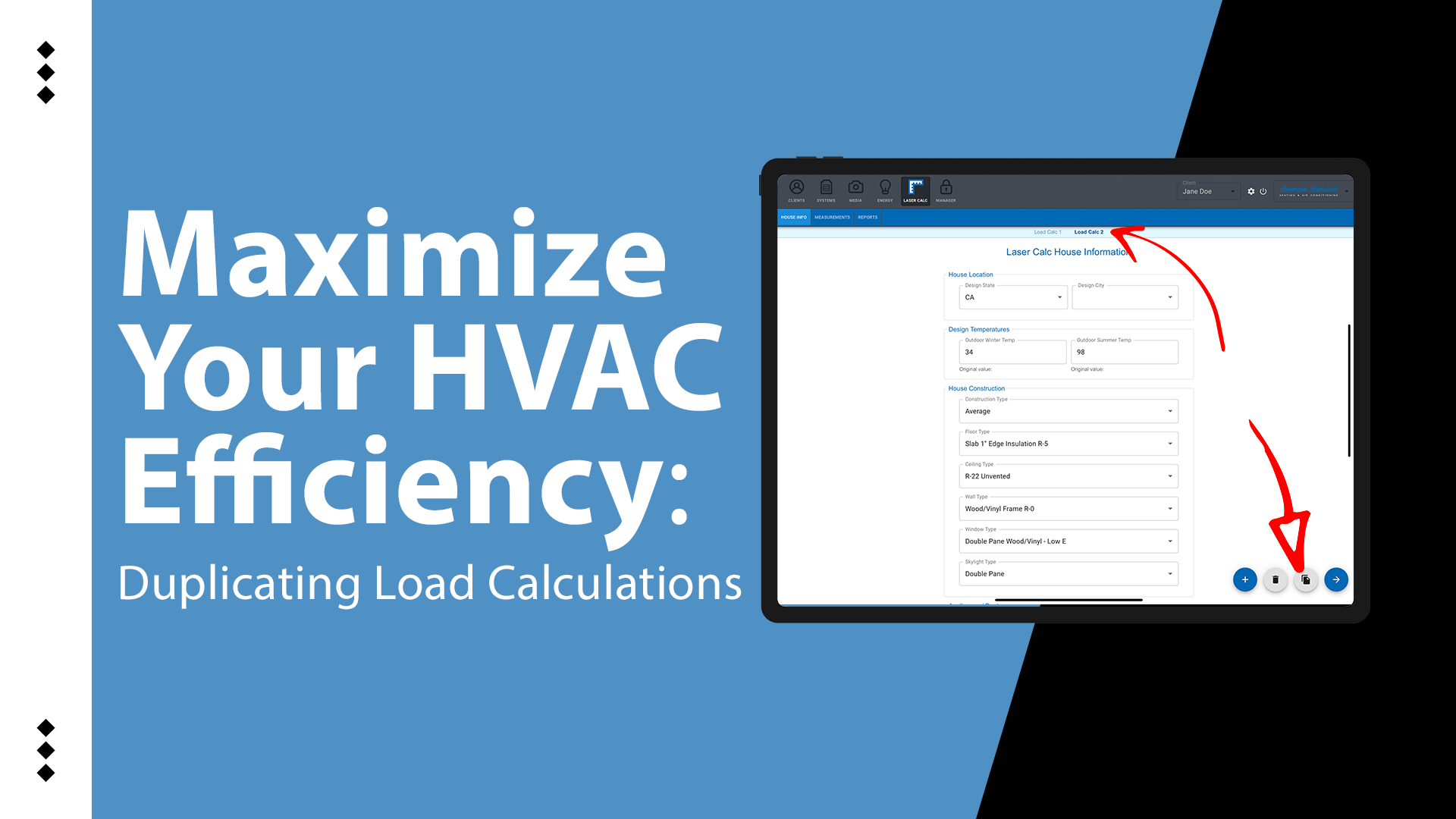Blog

Maximize Your HVAC Efficiency
AirMatch Makes Duplicating Load Calculations Easier for Home Improvement Opportunities
If you’ve been working in HVAC, you know how critical load calculations are for determining the right system for a home. But you might be wondering why AirMatch just made it easier to do comparison load calculations. The answer is simple: comparison load calcs open up new opportunities to offer homeowners value-added upgrades—like insulation, new windows, or other energy-efficient improvements. In fact, comparison load calculations can sometimes reveal that a home could function just as well with a lower-ton unit, saving the homeowner money while optimizing comfort.
Here’s why this matters, and how you can use this new feature to drive home improvement sales.
Step 1: Perform the Initial Load Calculation
Begin by conducting a standard load calculation for the home’s current conditions. This baseline includes important factors such as square footage, insulation, window quality, and air leakage—all of which determine accurate heating and cooling needs.
- Include the current HVAC system’s capacity in the assessment.
- Factor in insulation and window quality for a complete picture.
This initial calculation is crucial as it provides a foundation for modeling future home improvements.
Step 2: Why Comparison Load Calculations Matter
With AirMatch’s new feature, comparison load calculations are now faster and easier. But why would you want a comparison a load calc?
By creating a comparison load calc, you can make quick modifications to model future upgrades without losing your original data. This allows you to explore how home improvements—like better insulation, replacing old windows, or sealing air leaks—can reduce the home’s overall load. Comparison load calcs create a side-by-side comparison, so homeowners can see the potential benefits of these upgrades in real-time.
Step 3: Model Home Improvements
After creating a comparison load calculation, start introducing potential upgrades to the home’s structure:
- Improved insulation: Adding insulation to attics, walls, and floors can reduce heating and cooling demands.
- Energy-efficient windows: Replacing outdated windows with modern, energy-efficient ones can significantly lower the home’s load, reducing the size of the required HVAC system.
- Air-sealing and ventilation upgrades: Addressing air leaks and improving ventilation can enhance both comfort and efficiency.
In some cases, these improvements will result in a lower total HVAC load, meaning the homeowner could even benefit from a smaller, lower-ton unit—something that saves money on upfront equipment and long-term energy costs.
Step 4: How Clear Efficiency Uses Load Calculations
Wondering how comparison load calcs can be a game-changer in the field? Check out this video about how Clear Efficiency, an HVAC and home energy company, uses AirMatch’s comparison load calc feature to upsell home improvements.
In the video, they demonstrate how comparison load calculations allowed them to show the impact of adding attic insulation and sealing air leaks, resulting in the homeowner needing a lower-ton HVAC unit. Not only did the customer save on their energy bills, but they also avoided purchasing a larger unit, all thanks to the ability to run a comparison load calc for future scenarios.
Clear Efficiency’s approach is a perfect example of how this feature can help HVAC businesses stand out by offering homeowners more than just equipment—they offer energy-efficient solutions that benefit the entire home.
Step 5: Presenting the Comparison to the Homeowner
After completing the comparison load calculation, present a clear comparison to the homeowner:
- Highlight the total HVAC load before and after proposed improvements.
- Show how energy-efficient upgrades can reduce the home’s heating and cooling needs.
- Explain how, in some cases, the home may function efficiently with a lower-ton unit—saving them money on both installation and energy bills.
This approach not only positions you as a trusted advisor but also shows that you’re invested in the long-term value of their home.
AirMatch’s new feature for comparison load calculations makes it easier than ever to offer energy-efficient upgrades to homeowners. Whether you’re modeling better insulation, new windows, or other improvements, comparison load calcs help provide a clear comparison between the home’s current state and its potential future efficiency. In some cases, you might even be able to recommend a smaller HVAC unit, adding even more value to the homeowner’s investment.

